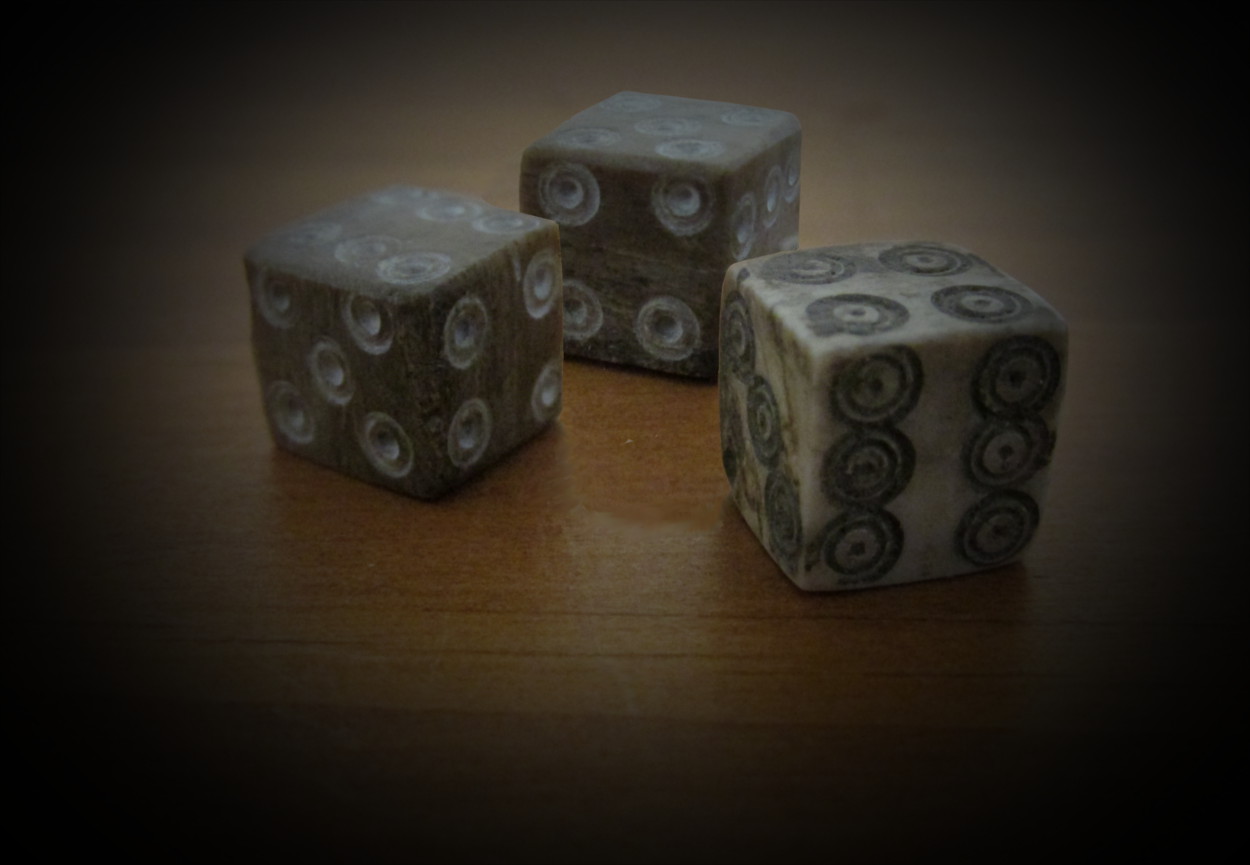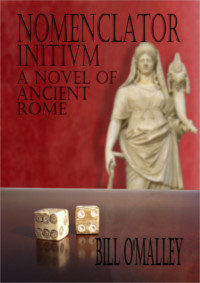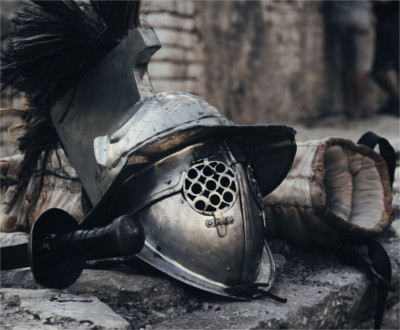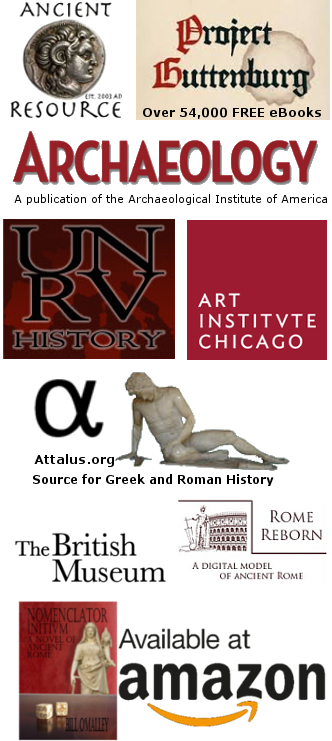


Ancient Roman Fun and Games
Like all people, the ancient Romans found time for fun activities. Since so much of Roman life revolved around the military, boys were encouraged to engage in athletic activities and horsemanship from an early age. The families of lower class boys could not afford horses, but the sons of equites and patricians were encouraged to learn to ride at an early age.
Between the banks of the Tiber River and the city of Rome there was a large open field that was owned by the last Etruscan king of Rome. When he was defeated and exiled, the Romans dedicated this space to the god Mars and it was ever after known as Campus Martius or Field of Mars. In early Rome, this field was the gathering place of the men of the city when they were sent off to war with their neighbors, but as Rome extended her reach and fought wars at greater distances, there was little need to use the space for mustering forces. Over time the space was filled in with buildings, but for a long time there was enough space for the Romans to use it for sports, including boxing, wrestling, foot racing, and swimming, which was done in the nearby river.

What is best know about ancient Roman games is the public games. These included chariot races in the Circus Maximus and other venues, gladiatorial combat, staged wild animal hunts, and public executions. Throughout centuries of Roman history, there were no permanent arenas for gladiatorial games. Sometimes they were staged in the Circus Maximus, open areas, or makeshift arenas. The famous Flavian Amphitheater, now known as the Colosseum, was constructed between the years 72 AD and 80 AD well after the time of Caesar and the years covered in the Nomenclator series.
Ball Games
There were also several games that involved the use of balls though the rules of some of these games are unknown. There were games involving throwing, catching, and kicking balls.
Games played with balls seem to be a constant throughout time and cultures, and ancient Rome was not an exception. There were many popular ball games played in ancient Rome and several, but not all, have been identified by name. As is the case today, different types of balls were found to be more suitable for different types of games, and the play of many games could be varied to suit the circumstances, from children playing in the streets to serious athletic contests. What we do know of the ball games played by the Romans comes to us in the form of carvings, mosaics, and references made in literature and correspondence. There are no “manuals” describing the rules of ball games.
As is the case today, the balls that were used were often specific to certain games. There were balls of a variety of sizes. They played with hard balls that had little bounce, soft balls, inflated balls, large balls, and even glass balls.
Below you will find brief descriptions of three types of ancient Roman ball games. The descriptions are vague because they are based on the very limited knowledge historians and archaeologists could piece together about the ball games played by the ancients.
Expulsim Ludere
Expulsim Ludere was a popular form of handball. One reason for its popularity may have been because in crowded Roman cities, this game of handball could be played in a small amount of space. All that was needed was the proper ball and a wall. The exact rules of this game are lost to history, but it was probably played in the same way handball is played today. Bouncing balls could have been made by wrapping something inflatable, such as a pig bladder in leather, or tightly winding flexible animal sinews into a ball and covering that in leather however, the technology of the Romans would not have allowed for a ball to have as much “bounce” as modern handballs.
Trigon
Another popular game was called trigon. As its name the game was played by three players arranged in a triangle. The ball for this game was hard and had little bounce. These balls were probably made from linen or animal hair wrapped in string and stitched together. The rules of trigon are not known but it would seem the object of the game was to throw the ball to another player in the hopes that he would not be able to catch it or even that he would be hit by the ball. Each dropped ball would earn the thrower a point. Ancient literature mentions the use of score keepers which might mean that different values were given for different types of catches. Hitting a ball back without catching it or catching it in the left hand were considered a mark of skill and could have counted for more points. Were it simply a matter of counting missed balls, it would have been easy for the players themselves to keep track of the score.
Glass balls a bit smaller than a tennis ball have been found and these may have been used in this game. A hard, heavy, and fragile ball would have been harder to bounce back and would have broken if dropped. There is an account of a particullary skilled player who played with a glass ball and never broke one.
Harpastum
Harpastum was a team game, probably similar to modern rugby. The ancients spoke of it as a game requiring a great deal of speed, and exertion, resulting in exhaustion. Like the other ball games, little is known about the rules of harpastum. The game was played on a rectangular field with marked boundaries and when the ball went outside the boundaries it was out of play. The object to of the game seems to have been to move the ball from the opposing teams side of the field to your team’s side by intercepting catches or taking it from an opponent.
Scoring is also poorly understood. Since it was stated that the ball couldn’t be allowed to touch the ground, It may be that a point was scored when one side could move the ball away from the opposite team’s side and have it touch ground on their own territory.
From the ancient descriptions, harpastum sounds like an extreme game of “keep away” with the object being to cross over to the opponent’s side of the field, get the ball from one of their player and move it to your own side without having the ball taken from your player or having that man brought to the ground. To enable this, the ball was thrown from one player to another as it was moved across the field.
Board Games
Board games were also quite popular in ancient Rome. With the passage of time, the rules for some of the games have been lost but others are well known. Some continue to be played, with some variations, to this very day.
Gambling was very popular in Rome and many of the board games lent themselves to gambling. Dice was an especially popular pastime with gamblers.
Click on the game links below to learn more about individual Roman board games.
Tali TesseraeDuodecim Scriptorum
Tabula
Latrunculi
Games, sports, and gambling were very popular pastimes in ancient Rome. In an age when there was not the sort of technology available to us today to keep us amused, people devised many games that could fill their free time with much enjoyment.
These links are being provided as a convenience and for informational purposes only; they do not constitute an endorsement or an approval by Nomenclator Books or Bill O'Malley of any of the products, services or opinions of the corporation or organization or individual. Nomenclator Books and Bill O'Malley bears no responsibility for the accuracy, legality or content of the external site or for that of subsequent links. Contact the external site for answers to questions regarding its content.



















